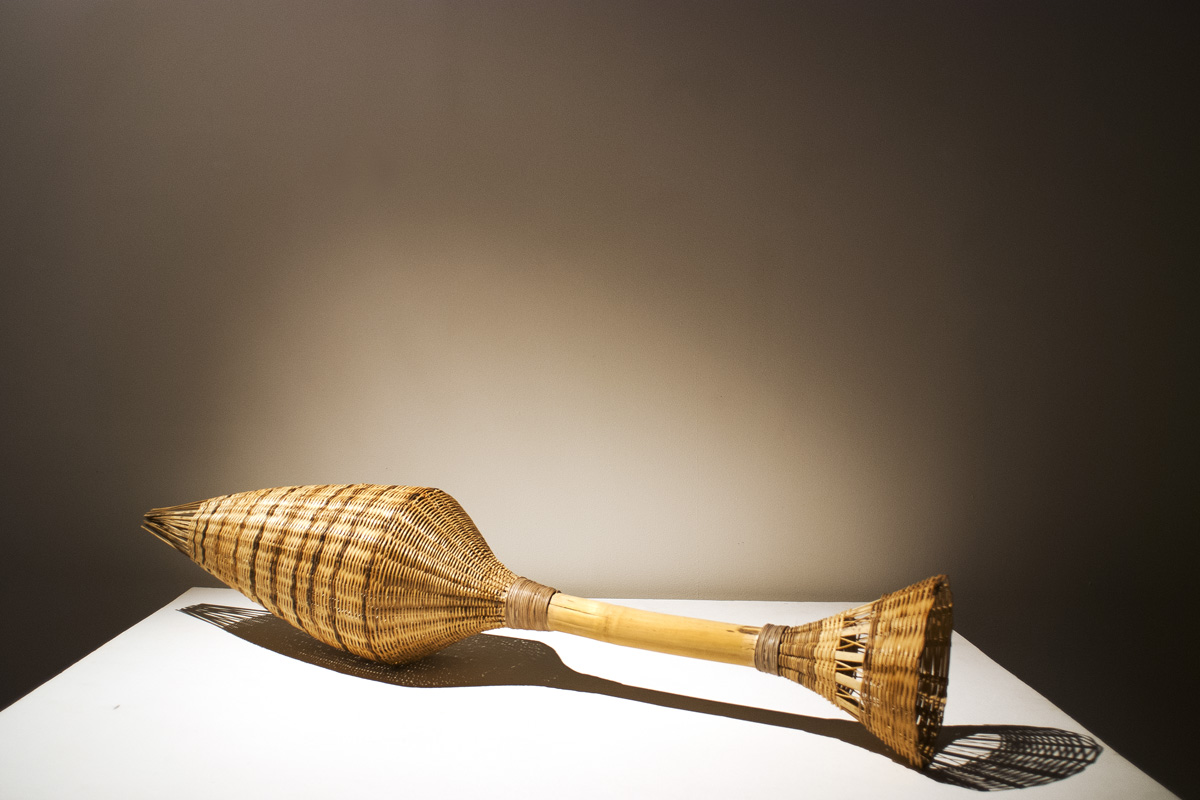Events + Exhibits / SIMBI dzebasa

SIMBI dzebasa
“Simbi dzebasa” is a contemporary Shona slang phrase in Zimbabwe. The literal translation of “simbi,” is metal, and “dzebasa” means “of work.” The phrase could be translated as “the powerful precious thing that keeps us going.”
Similar to Detroit, Zimbabwe has struggled through social, economic and political hardships. More importantly, it too has been able to sustain its core spirit of resilience. This exhibit looks at four contemporary artists who live and work in Harare, Zimbabwe, and whose work investigates, questions or comments on those strong, precious things that keep us going.

Tapfuma Gutsa’s recent work is based on several years of research on the technological craft used in basketry in Binga and the rural Honde Valley of Zimbabwe. Having witnessed the fall of tourism, which historically sustained traditional practices, his goal is to bring attention to the craft and its need to grow and transform. He ran a series of workshops on creating new forms and functions to use with the indigenous technology. The workshops led to diplomas enabling economic opportunities for participants. His piece is from a series he did following the Honda Valley workshops called Moon Baskets. They were displayed at the National Gallery of Zimbabwe in Harare, at an exhibition entitled Basket Case II.

Masimba Hwati sees his sculpture as a social apparatus that bridges complex histories, traditional practices and contemporary Western influences. For example, in the Chamvari series, a horn from a Kudu antelope, which is traditionally used as a trumpet (Hwamanda), is transformed into a skateboard. Skateboarding culture in Zimbabwe only exists through images from the Internet, not as a physical practice in the city. It remains as distant as the use of the Kudu horn in contemporary Zimbabwe culture. He is interested in how these two worlds collide or become hybrids. In this exhibition his work can be seen as “tools” for the imagined work.

Nancy Mteki directly confronts the social political structures in Zimbabwe that place single mothers as outcasts. Within the private space of her home, she publicly asks us to look. In her previous exhibition at Njelele Art station in Harare, Tawanda Appiah explains that the work “shames whilst simultaneously sexualizing and objectifying the black female form.”

The video installation done by Gareth Nyandoro is the most recent piece in the exhibition. The imagery is taken from a performance or “rural intervention” where he robed himself in a blanket and strapped headlamps, which are normally used for miners, on thirty goats and himself. In this video, titled Mfana Wembudzi (the child of a goat), Nyandoro reenacts his own youth as a goat herder, revealing poetic mysticism in all its complex symbolic power.
The “metal of work” can also be translated to the “core of our labor” and in this exhibit labor is central to all four artists. Labor is represented either as a task, action of work, or its social political constructs. Thus with all four artists, the art is performative, from Tapfuma Gutsa’s recent work within communities, the imagined labor in Masimba Hwati’s tools, Nancy Mteki’s body as the performative object, to the mystical ritual in Gareth Nyandoro’s work. This core element of labor is something we are very familiar with in Detroit. The artists live and work 8255 miles away from Detroit, but they share the same understanding of holding onto “the powerful precious thing that keeps us going.”
